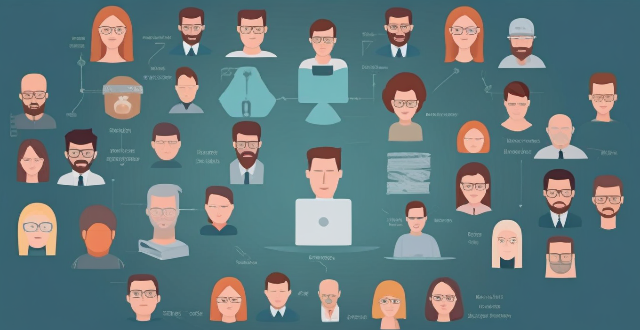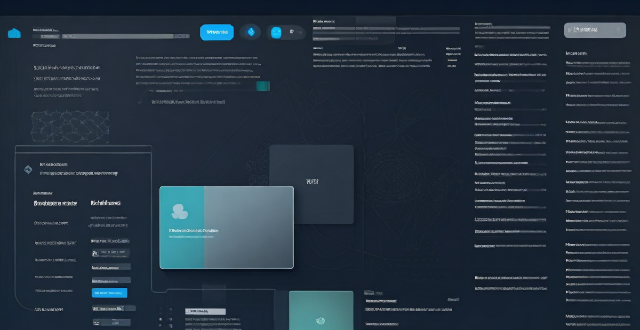Software Cool

How can I improve my productivity with educational software ?
Educational software can be a powerful tool to enhance your productivity, but it's essential to use it effectively. Here are some tips on how you can improve your productivity with educational software: 1. Set clear goals and objectives before using any educational software. This will help you select the right software that aligns with your needs and ensure that you stay focused on what you want to achieve. 2. Choose the right software for your specific needs. Look for software that is user-friendly, engaging, and relevant to your learning goals. Consider factors like cost, accessibility, and compatibility with your devices. 3. Use the software regularly. Consistency is key when it comes to improving your productivity with educational software. Make a schedule for when you will use the software and stick to it. Even if you can only devote a few minutes each day, regular use will help reinforce your learning and keep you on track. 4. Take advantage of interactive features like quizzes, games, and simulations. These can be great tools for reinforcing your learning and making the process more engaging. Be sure to take advantage of these features whenever possible. 5. Track your progress. Keeping track of your progress is an excellent way to stay motivated and see how far you've come. Many educational software programs have built-in tracking features that allow you to monitor your progress over time. If your software doesn't have this feature, consider using a separate tool like a spreadsheet or journal to track your progress manually.

Did Apple introduce any new services or software updates at the event ?
Apple's latest event introduced several new services and software updates. The new services include Apple Music Voice Plan, Apple Maps with interactive 3D experience and immersive walking directions, and Apple Fitness+ with group workouts and integration with Apple Watch's activity rings. The software updates include iOS 15 with Focus Mode improvements, Live Text in Photos, and enhanced Memories; iPadOS 15 with App Library and Home Screen changes, multitasking improvements, and Quick Note and Scribble features; watchOS 8 with a Mindfulness app, new Workout app, Portrait Watch Faces, and respiratory rate tracking; and tvOS 15 with Home Screen updates, Shared With You, new interactive features, and HomeKit and accessory updates. These new services and software updates showcase Apple's commitment to enhancing the user experience across their ecosystem of devices.

How long should I wait before showering after an intense workout
After intense workout, wait 15-20 minutes before showering to cool down, reduce injury risk, rehydrate, and promote healthy skin.

How can I ensure my lunch box stays cold until lunchtime ?
Keeping your lunch box cold until lunchtime is essential for maintaining the freshness and safety of your food. Here are some tips on how to ensure your lunch stays cool: 1\. Use a high-quality insulated lunch box with thick insulation and a secure lid that can trap cold air inside. 2\. Add ice packs or freezer packs to help keep it cold. Make sure they are clean and properly sealed before placing them next to your food items. 3\. Freeze your food overnight before packing it into your lunch box to help keep everything cold throughout the morning and early afternoon. Just be sure to thaw it slightly before eating so it's not too hard to chew. 4\. Store your lunch box in a cool place like a pantry or refrigerator instead of leaving it out on the counter where heat from appliances might warm it up. 5\. Avoid opening your lunch box too often, as every time you open it, you let warm air in and cold air out. Try to resist the temptation to peek inside unless necessary. 6\. Use a chilled snack container within your lunch box for snacks like fruits, vegetables, or yogurt, so even if your main meal gets slightly warmer, your snacks will still be refreshingly cool. 7\. Consider investing in a portable refrigerator or cooler bag specifically designed for food storage if you need your lunches to stay cold for extended periods. These devices typically use either ice or electronic cooling systems to maintain low temperatures. 8\. Plan ahead and eat early if your schedule allows, as the longer your lunch sits at room temperature, the less likely it is to remain cold and safe to consume.

How do I bake a fluffy vanilla sponge cake ?
Baking a fluffy vanilla sponge cake is a delightful experience for both beginners and seasoned bakers. Here are the steps to follow: ### Ingredients: - **200g All-purpose flour** - **200g Granulated sugar** - **100g Unsalted butter (room temperature)** - **4 Large eggs** - **1 tsp Baking powder** - **1/2 tsp Salt** - **1 tbsp Vanilla extract** ### Tools: - Mixing bowls - Electric mixer or whisk - Measuring cups and spoons - Sieve - 8-inch cake pan - Parchment paper - Oven ### Steps: #### Preheat Your Oven 1. **Preheat your oven to 175°C (350°F).** #### Prepare Your Pan 2. **Line the bottom of your cake pan with parchment paper.** #### Mix Dry Ingredients 3. **Sift together the flour, baking powder, and salt.** #### Cream Butter and Sugar 4. **In a separate bowl, cream the butter and sugar until light and fluffy.** #### Add Eggs and Vanilla 5. **Add the eggs one at a time, mixing well after each addition. After all the eggs are incorporated, add the vanilla extract.** #### Combine Wet and Dry Ingredients 6. **Gradually fold the dry ingredients into the wet mixture, being careful not to overmix.** #### Bake Your Cake 7. **Pour the batter into your prepared pan and smooth the top. Bake for 25-30 minutes, or until a toothpick inserted into the center comes out clean.** #### Cool and Decorate 8. **Allow the cake to cool in the pan for 10 minutes before turning it out onto a wire rack to cool completely. Once cooled, you can decorate as desired.**

What are the risks associated with using outdated software ?
Using outdated software poses risks including security vulnerabilities, compatibility issues, and limited functionality. Regular updates are crucial for maintaining security, compatibility, and access to new features.

How does personalized learning through adaptive software benefit students ?
Adaptive software in education offers personalized learning experiences, enhancing student engagement, academic performance, and key skill development. It supports inclusive education, prepares students for future challenges, and makes learning more efficient and effective.

What software tools are available to help with budget creation ?
Budgeting is an essential aspect of financial planning, and there are several software tools available that can help with budget creation. Microsoft Excel, Google Sheets, Quicken, Mint, and YNAB are some of the most popular options. Each tool has its own set of features, pros, and cons that make it suitable for different types of users and budgeting needs.

What is the importance of regular software updates in network security protection ?
Regular software updates are vital for network security protection, addressing vulnerabilities, improving performance, adding features, and maintaining compliance with industry standards. Best practices include establishing an update policy, using automated tools, testing updates, prioritizing critical updates, maintaining a system inventory, educating users, monitoring post-update issues, staying informed about threats, backing up data, and reviewing third-party applications for updates. Adhering to these practices reduces cyber threats and ensures the integrity of systems and data.

How can I ensure my business is protected from cyber threats ?
To ensure your business is protected from cyber threats, consider implementing measures such as educating employees on cybersecurity, using strong passwords and two-factor authentication, keeping software up-to-date, using antivirus and anti-malware software, securing networks with firewalls and encryption, backing up data regularly, limiting access to sensitive information, monitoring network activity, and developing incident response plans.

How can I protect my personal data privacy ?
In the digital age, protecting personal data privacy is crucial. To enhance privacy, use strong and unique passwords, enable two-factor authentication, keep software up-to-date, be cautious with public Wi-Fi, monitor your online presence, use antivirus and anti-malware software, educate yourself about phishing scams, and control app permissions. Staying vigilant and informed is key to safeguarding your online privacy.

What are the best software tools for creating mind maps ?
Best Software Tools for Creating Mind Maps Mind maps are an excellent way to visually organize information, ideas, and thoughts. They help in brainstorming, planning, and problem-solving. There are several software tools available that make it easy to create mind maps. Here are some of the best ones: 1. XMind is a powerful mind mapping tool that offers a range of features to create professional-looking mind maps. It has a user-friendly interface and supports various chart types, including tree, logic, and matrix. XMind also allows you to import and export data in different formats, making it easy to share your work with others. 2. MindMeister is an online mind mapping tool that lets you create mind maps directly in your browser. It offers real-time collaboration, allowing multiple users to work on the same mind map simultaneously. MindMeister also integrates with popular apps like Google Drive and Dropbox, making it easy to save and share your work. 3. Coggle is another online mind mapping tool that offers a simple and intuitive interface. It allows you to create beautiful mind maps with images, links, and notes. Coggle also supports collaboration, letting you invite team members to work on the same mind map together. 4. FreeMind is a free, open-source mind mapping tool that offers basic functionality for creating mind maps. It has a clean and straightforward interface, making it easy to get started with mind mapping. FreeMind also allows you to export your mind maps in various formats, including HTML and PDF. 5. iMindMap is a comprehensive mind mapping tool that offers a wide range of features for creating visually stunning mind maps. It has a unique "radial" view that makes it easy to focus on specific areas of your mind map. iMindMap also supports multimedia elements, such as images and audio files, making it an excellent tool for creative projects.

What software tools are commonly used for sports data analysis by coaches and analysts ?
Sports data analysis has become a crucial aspect of modern sports coaching and management. Coaches and analysts use various software tools to collect, analyze, and interpret data to enhance team performance, player development, and tactical planning. Some commonly used software tools for sports data analysis include Prozone, StatsBomb, Opta, Hudl, and SoccerMetrics. These tools offer features such as player performance analysis, event data tracking, in-depth match analysis, video analysis, performance tracking, and visualization tools. Coaches and analysts can choose the ones that best suit their needs and preferences to gain valuable insights into their team's performance and make informed decisions to improve their results.

What is ransomware and how does it work ?
Ransomware is malicious software that blocks access to computer systems or data until a ransom is paid. It spreads through phishing emails, exploit kits, and drive-by downloads. Once activated, it encrypts files and demands a ransom for the decryption key. Paying the ransom doesn't guarantee data recovery, and the malware may remain on the system. The impact includes data loss, downtime, reputational damage, and financial costs. Prevention involves regular backups, software updates, user education, security tools, and an incident response plan.

How do I know if my iPhone needs a software update or a hardware repair ?
The text is a guide that helps iPhone users determine whether their device requires a software update or hardware repair. It outlines steps to check for available updates, restart the device, and reset it to factory settings if needed. The guide also suggests inspecting the iPhone for physical damage, testing basic functions, and checking battery health as indicators of potential hardware issues. If unsure about the cause, the text advises visiting an Apple Store or authorized service provider for further diagnostics.

Are there any apps or software that can help me learn speed reading ?
There are several apps and software available to help improve speed reading skills. These include Spreeder CX, Outread, ReadSpeeder, Sorcery!, and Velocity. Each tool has unique features such as word-by-word display, sequential word highlighting, rapid serial visual presentation, memory training exercises, and practice exercises. Choose one that suits your needs and preferences, and start practicing regularly to see improvements in reading speed and comprehension.